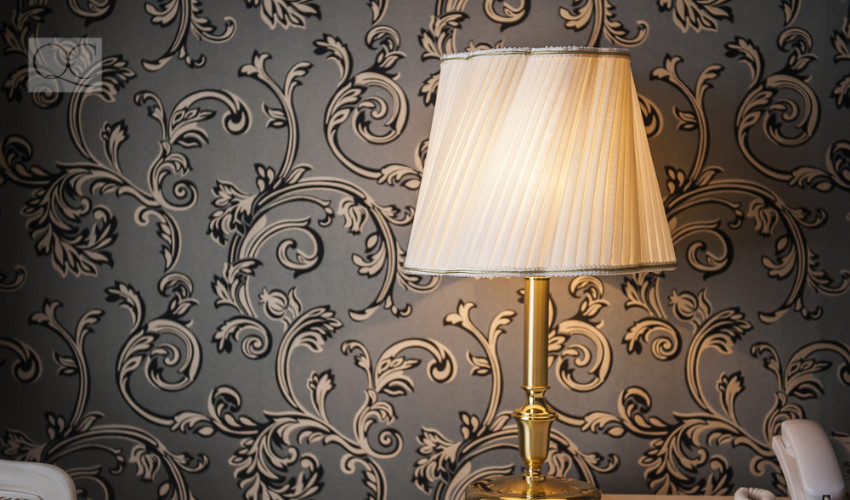You’ll always encounter people who may be a little resistant to your decorating recommendations—that’s completely normal. Everyone has different tastes or identifies with certain aesthetics that may be completely opposite from yours. But once in a while, you’ll run into someone who will disagree with you on more than just a small desk lamp.
At some point in your career, you’ll encounter a client whose decorating taste is… not great. In fact, it’s downright bad. When this happens, you can’t just ignore it! As a certified interior decorator, you have to make sure that you deliver the best service to your clients, so you have to communicate with them to find the best solution.
But how should you go about maneuvering this rocky terrain? If you don’t know how to address your client’s terrible taste, read on.
 You’re always trying to decorate your clients’ homes so that they’re comfortable while maintaining a timeless aesthetic. Clients might observe individual décor pieces in a vacuum, and that can be crippling for a designer. Sometimes your client may initially dislike something, but once they see how it all fits together with the rest of the space, they might just change their mind.
You can also try to connect the choices with what they had initially wanted in their vision. Explain why the items you picked out work with the initial design plans, and why they would fit better than what your clients might have gone with instead.
When you keep the final project goals in mind, you’ll be able to give confident answers and explanations. Spending too much time debating the location or pattern of a shelving unit here, or an ottoman there, will divert your focus. Making connections and giving clear explanations will make your clients feel integral to the process. They won’t feel shut out with no control over the final outcome.
You’re always trying to decorate your clients’ homes so that they’re comfortable while maintaining a timeless aesthetic. Clients might observe individual décor pieces in a vacuum, and that can be crippling for a designer. Sometimes your client may initially dislike something, but once they see how it all fits together with the rest of the space, they might just change their mind.
You can also try to connect the choices with what they had initially wanted in their vision. Explain why the items you picked out work with the initial design plans, and why they would fit better than what your clients might have gone with instead.
When you keep the final project goals in mind, you’ll be able to give confident answers and explanations. Spending too much time debating the location or pattern of a shelving unit here, or an ottoman there, will divert your focus. Making connections and giving clear explanations will make your clients feel integral to the process. They won’t feel shut out with no control over the final outcome.
 If they are giving conflicting suggestions on whims and starting to micro-manage the process, remind them that they hired you because they liked your previous work. They hired you for your professional opinion, so if they impede your ability to do your work, it’s going to be difficult to complete the project.
It can be frustrating to work with a client who wants professional expertise but also has problems trusting your judgment. Try reasoning with your client. Ask them about their goals and explain how you plan to achieve them. Sometimes it takes some compromising, but speak openly with them about why their choices are outdated, or why their color scheme wouldn’t fit with the architecture of the home. Be direct but considerate, and always be professional.
If they are giving conflicting suggestions on whims and starting to micro-manage the process, remind them that they hired you because they liked your previous work. They hired you for your professional opinion, so if they impede your ability to do your work, it’s going to be difficult to complete the project.
It can be frustrating to work with a client who wants professional expertise but also has problems trusting your judgment. Try reasoning with your client. Ask them about their goals and explain how you plan to achieve them. Sometimes it takes some compromising, but speak openly with them about why their choices are outdated, or why their color scheme wouldn’t fit with the architecture of the home. Be direct but considerate, and always be professional.
 If you found that working with this client was next to impossible, but you’ve managed to finish the job, the best thing to do is to distance yourself from any future jobs this client may want to hire you for. Explain that your decorating styles are too different and that the fit just isn’t right.
On the other hand, if you end up persuading your client to go along with your ideas (with their input, of course), well, great! You might even end up starting another decorating project with them. Just make sure that any roadblocks, issues, and misunderstandings are cleared up so you don’t end up in another difficult situation again!
Got some bad-taste horror stories of your own? Leave them in the comments!
If you found that working with this client was next to impossible, but you’ve managed to finish the job, the best thing to do is to distance yourself from any future jobs this client may want to hire you for. Explain that your decorating styles are too different and that the fit just isn’t right.
On the other hand, if you end up persuading your client to go along with your ideas (with their input, of course), well, great! You might even end up starting another decorating project with them. Just make sure that any roadblocks, issues, and misunderstandings are cleared up so you don’t end up in another difficult situation again!
Got some bad-taste horror stories of your own? Leave them in the comments!
Argue for the whole
 You’re always trying to decorate your clients’ homes so that they’re comfortable while maintaining a timeless aesthetic. Clients might observe individual décor pieces in a vacuum, and that can be crippling for a designer. Sometimes your client may initially dislike something, but once they see how it all fits together with the rest of the space, they might just change their mind.
You can also try to connect the choices with what they had initially wanted in their vision. Explain why the items you picked out work with the initial design plans, and why they would fit better than what your clients might have gone with instead.
When you keep the final project goals in mind, you’ll be able to give confident answers and explanations. Spending too much time debating the location or pattern of a shelving unit here, or an ottoman there, will divert your focus. Making connections and giving clear explanations will make your clients feel integral to the process. They won’t feel shut out with no control over the final outcome.
You’re always trying to decorate your clients’ homes so that they’re comfortable while maintaining a timeless aesthetic. Clients might observe individual décor pieces in a vacuum, and that can be crippling for a designer. Sometimes your client may initially dislike something, but once they see how it all fits together with the rest of the space, they might just change their mind.
You can also try to connect the choices with what they had initially wanted in their vision. Explain why the items you picked out work with the initial design plans, and why they would fit better than what your clients might have gone with instead.
When you keep the final project goals in mind, you’ll be able to give confident answers and explanations. Spending too much time debating the location or pattern of a shelving unit here, or an ottoman there, will divert your focus. Making connections and giving clear explanations will make your clients feel integral to the process. They won’t feel shut out with no control over the final outcome.
Listen and respond accordingly
You may think that your client has bad taste, but make sure that you listen to what they have to say. Don’t just let their words go in through one ear and out the other! You should respect their opinions, and they’ll do the same for you once they feel like they are being heard and that their contributions are helping you shape the project. If they are giving conflicting suggestions on whims and starting to micro-manage the process, remind them that they hired you because they liked your previous work. They hired you for your professional opinion, so if they impede your ability to do your work, it’s going to be difficult to complete the project.
It can be frustrating to work with a client who wants professional expertise but also has problems trusting your judgment. Try reasoning with your client. Ask them about their goals and explain how you plan to achieve them. Sometimes it takes some compromising, but speak openly with them about why their choices are outdated, or why their color scheme wouldn’t fit with the architecture of the home. Be direct but considerate, and always be professional.
If they are giving conflicting suggestions on whims and starting to micro-manage the process, remind them that they hired you because they liked your previous work. They hired you for your professional opinion, so if they impede your ability to do your work, it’s going to be difficult to complete the project.
It can be frustrating to work with a client who wants professional expertise but also has problems trusting your judgment. Try reasoning with your client. Ask them about their goals and explain how you plan to achieve them. Sometimes it takes some compromising, but speak openly with them about why their choices are outdated, or why their color scheme wouldn’t fit with the architecture of the home. Be direct but considerate, and always be professional.
Sometimes it just won’t work
You may specialize in the mid-century decorating style, and they may be so far into the past, it’s pre-vintage. Accepting clients whose needs are different than what you can offer isn’t recommended. They might want something that doesn’t fit with what your services work best for. During the initial client consultation, everything should be laid out on the table. You should structure your one-on-one consultations to find out exactly what your client expects, how they envision their home, and other personality traits that might make them difficult to work with. If they are difficult AND have bad taste, they might not be willing to budge and take on new décor ideas no matter how long or hard you’ve worked on them. If you found that working with this client was next to impossible, but you’ve managed to finish the job, the best thing to do is to distance yourself from any future jobs this client may want to hire you for. Explain that your decorating styles are too different and that the fit just isn’t right.
On the other hand, if you end up persuading your client to go along with your ideas (with their input, of course), well, great! You might even end up starting another decorating project with them. Just make sure that any roadblocks, issues, and misunderstandings are cleared up so you don’t end up in another difficult situation again!
Got some bad-taste horror stories of your own? Leave them in the comments!
If you found that working with this client was next to impossible, but you’ve managed to finish the job, the best thing to do is to distance yourself from any future jobs this client may want to hire you for. Explain that your decorating styles are too different and that the fit just isn’t right.
On the other hand, if you end up persuading your client to go along with your ideas (with their input, of course), well, great! You might even end up starting another decorating project with them. Just make sure that any roadblocks, issues, and misunderstandings are cleared up so you don’t end up in another difficult situation again!
Got some bad-taste horror stories of your own? Leave them in the comments!
